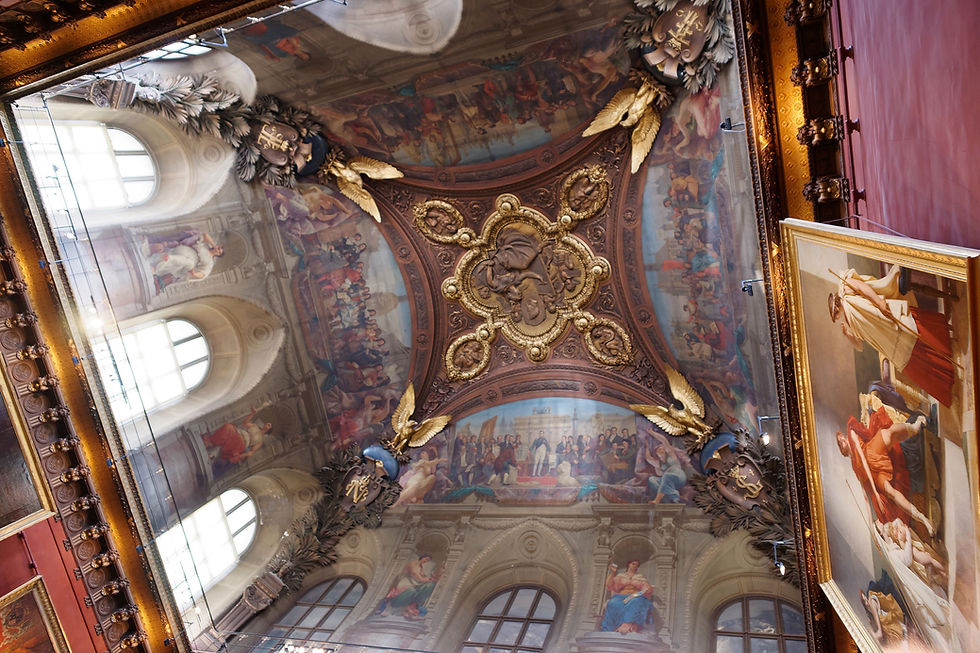Pablo Picasso: The Accused Art Thief!?
- Leanore

- Sep 3, 2022
- 3 min read

Let me tell you a Story...

Pablo Diego José Francisco de Paula Juan Nepomuceno María de los Remedios Cipriano de la Santísima Trinidad Ruiz y Picasso is quite the impressive name, but you probably know him as Pablo Picasso. Surely you know about him because of his work as a play-write, painter, and sculptor.
Picasso is considered one of the most influential artists of the 20th century, credited with co-founding the Cubist movement, creating constructed sculpture, developing and exploring a wide variety of styles.
What you may not have known about Pablo Picasso is that he was once accused of being an art thief. I'd like to go over the series of events that led to the accusation of art theft and why he was suspected of having stolen Leonardo da Vinci's famous painting, "Mona Lisa", from the Louvre.
Mona Lisa Snatched

The “Mona Lisa” by Leonardo da Vinci was stolen from the Louvre on August 21st, 1911. At the time, the painting was far from the most famous in the gallery. In fact, it ended up taking over 28 hours before someone even noticed that she was missing. A still life artist who had been painting that part of the gallery insisted he could not finish his work while the Mona Lisa was missing from her place. If he hadn't noticed, who knows how long they'd have gone before realizing that the painting had even been stolen?
This theft of this, now well-known, painting is actually credited with how the masterpiece became so famous in the first place. The massive media coverage for the time was all centering around this painting. Who took it? Why did they take it? The political climate at the time was tense, so entire countries were pointing the finger before too long.
A Likely Suspect?
On August 29th 1911 a man named Joseph Géry Pieret walked into the Paris-Journal to give a report regarding the one and only Pablo Picasso. Pieret disclosed that he had knowledge of a friendship between Picasso and an avant-garde poet by the name of Apollinaire. He went on to report that the two were in possession of several Iberian sculptures. Those Iberian sculptures had also been recently stolen from the Louvre.

That's what landed Pablo Picasso on the list of potential suspects in the theft of the, now famous, Mona Lisa. Both Picasso and Apollinaire were brought in for questioning regarding both the sculptures and the missing "Mona Lisa" painting. As you may have suspected by now, Picasso was released and wasn't the guilty party in the theft of the famous painting by Leonardo da Vinci.
"I Bought them from a Guy!"

This is where this particular part of the story takes a mildly amusing turn. During the questioning, it was discovered that Picasso had purchased the sculptures in what he claimed be thought was a legitimate transaction. The only slightly suspicious thing about that story was that the sculptures each had stamps on the undersides of them that read "Property of the Louvre Museum."
The best part? The guy who sold the sculptures was none other than Joseph Géry Pieret! The very same man who had walked into the Paris-Journal to point the finger in Picasso's direction to begin with! The sculptures were quickly turned-over and no connection to the missing Mona Lisa and Pablo Picasso was ever found. How about that Pieret guy though? le Douche, no?
What happened to the Mona Lisa!?
I'm sure you're wondering "what actually happened to Leonardo da Vinci's famous "Mona Lisa" if it wasn't with Pablo?" Well, let me tell you! Turns out, a man named Vincenzo Perugia was the real mastermind behind the Mona Lisa heist! He didn't work alone. He had the help of two brothers, Vincenzo and Michele Lancelotti, and the fact that he was who had been employed to install the protective glass that the painting was contained in before it was stolen.
Perugia held on to the painting for a while. The fact that the Mona Lisa had been stolen was a widely discussed topic and the news and traveled pretty far and very wide. There was no chance of him being able to sell the painting then and there. Even when a major reward was offered for the safe return of the painting, he decided he wouldn't be able to get away with collecting the reward without being caught.
It would be over two years later that Vincenzo Perugia would finally attempted to sell the painting to an art dealer in Florence who had the painting authenticated. Perugia left the painting in their possession and was sent home to await his reward. That reward was a nice little visit from police. Upon his arrest he attempted to claim that he had been acting with a patriotic heart when he stole the painting. Stating that Napoleon was the the thief and that Perugia had only the intention of returning the painting to her native Italy.
Sure, Buddy.
.png)



Comments